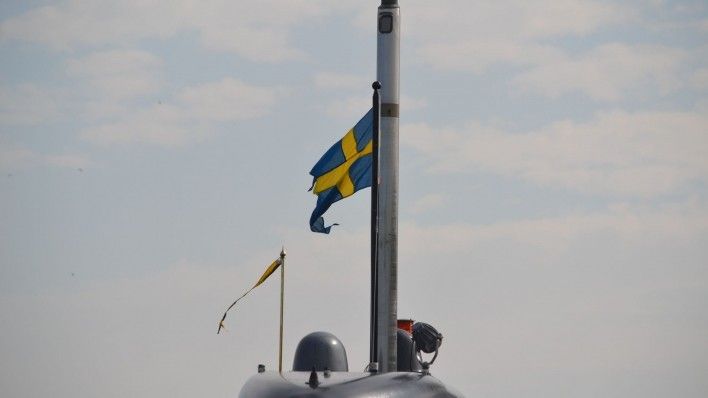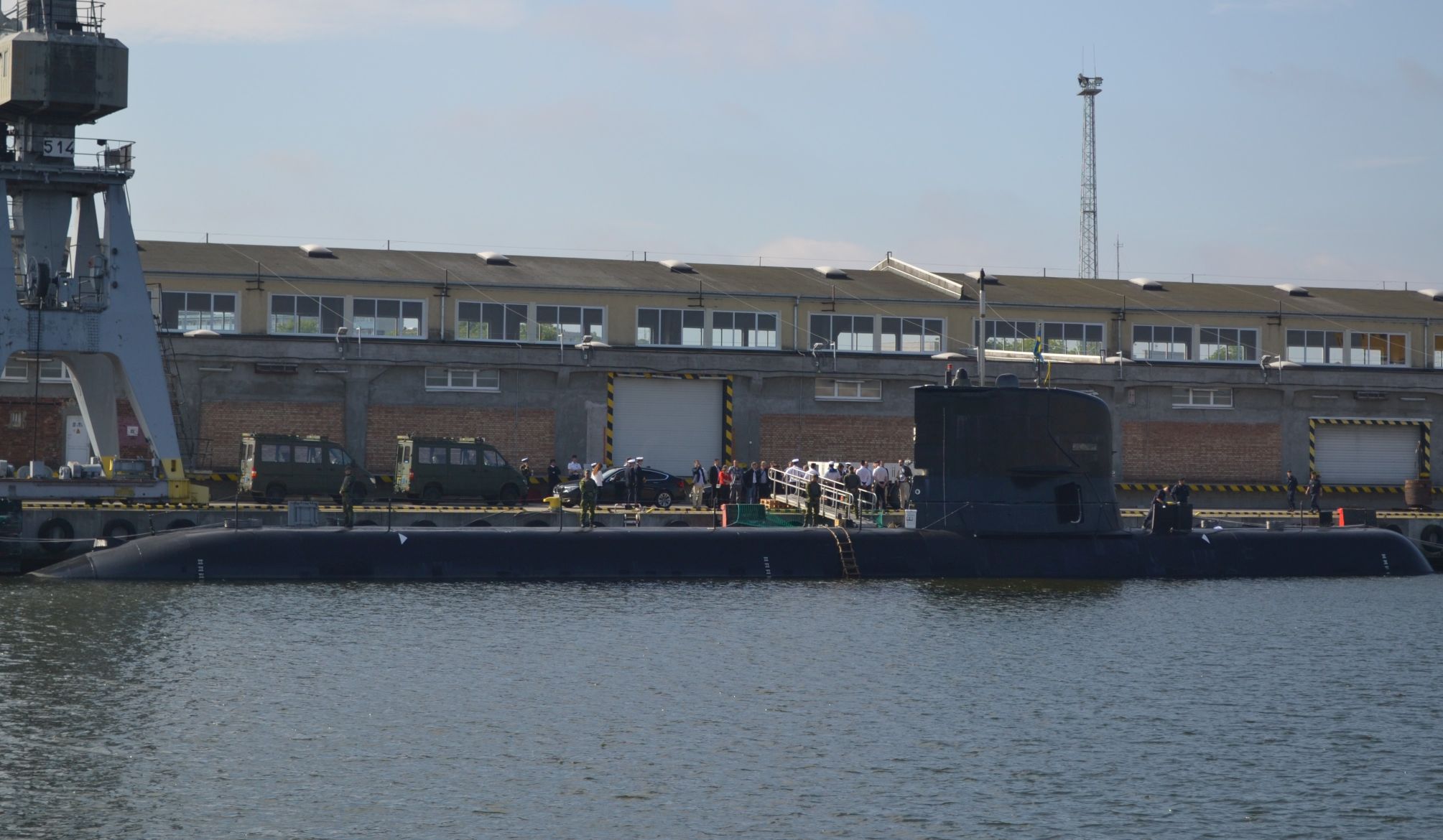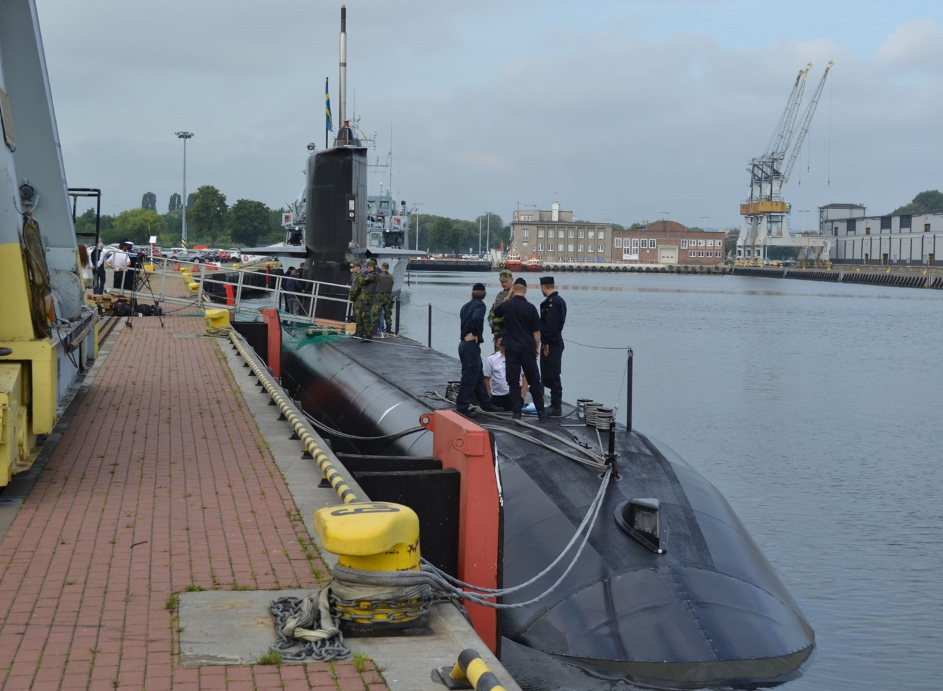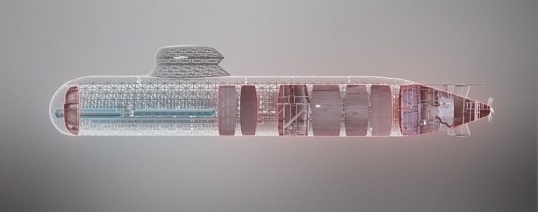Armed Forces
Is Sweden Willing to Maintain Its Submarines and Their Potential?

Sweden is facing problems with keeping a proper number of submarines in service. For some time now, less than five vessels have remained in operational use. The condition in which the Swedish submarine fleet finds itself in may also be influenced by negotiation with Poland, aimed at creating a gap-filler solution within the framework of the Polish Orka programme.
The plan unveiled by the Polish Ministry of Defence, to acquire two Södermanland-class submarines, could have influenced the stance adopted by Singapore, that did admit that it is willing to sell two Archer-class submarines to Sweden. Without those vessels, Sweden would not be able to follow the assumption of owning five submarines in its Navy, once its Södermanlands are transferred to Poland. However, this assumption, in practical terms, has not remained in force for a few years now.
Not only could the information released by Mariusz Błaszczak (head of the Polish MoD) on 28th November 2019 in Gdynia, unveiling the fact that negotiation is going on pertaining to the “Swedish” gap-filler, have impacted the plan to save the Polish Navy, but it could also have influenced the actions tied to reinforcement of the Swedish fleet of submarines. The aforesaid plan most probably assumed that Saab would first transfer a single A17/Södermanland-class (HMwMS „Östergötland”) vessel, with the second one (HSwMS „Södermanland”) to follow. Both vessels in question entered service in 1989.

In the meantime the Swedes were willing to buy two Archer-class submarines from Singapore (ex-Swedish Västergötland-class): RSS „Archer” (ex. HMwMS „Hälsingland”) and RSS „Swordsman” (ex, HMwMS „Västergötland”), commissioned in 1986 and 1987. Saab was to overhaul and upgrade these, and then they were to be handed off to the Polish Navy. The vessels in question were to be used until the new A26/Blekinge submarines become a part of the Swedish Navy. Then they could be sold to Poland as well, most probably.
Action as such undertaken by Sweden was needed as since 2019 the Swedish authorities have been declaring the will to maintain five submarines in service. Furthermore, continuity of work for the Saab Kockums facility is ensured. The shipyard in question is only working on two A26/Blekinge submarines now, that are to be supplied to the Swedish Navy. Sucess of the Polish-Swedish plans would translate into a contract for modernization of the third A19/Gotland submarine. Furthermore, the Shipyard would also work on custom-tailoring both Södermanlands for the Polish Navy, it would also overhaul the Archer-class submarines procured from Singapore.
How can the “Swedish gap-filler” for Poland impact the Swedish plans of modernization of the Swedish Navy’s submarine fleet?
The public dialogue around the gap-filler solution we could have witnessed in Poland could have had an impact on the possibility of finalizing the plans pertaining to the Swedish submarines fleet, reinforcement with Singaporean vessels included. Above all, no information had been made available before, with regards to the Sweden-Singapore negotiation on the Archer-class vessels. Defence24.pl asked questions on that matter, addressed both to the Singapore’s MoD, as well as to the Swedish FMV entity. However, never have we received any specific information.
Singaporean MoD asked whether it is true that the government is involved in negotiation concerning sale of both Archer-class submarines to Sweden and when a sale as such could potentially happen, and whether Poland was also interested in procurement of the Archer-class submarines refused to comment, just indicating that any information on the resources of the Singapore’s Armed Forces can be accessed via the https://www.mindef.gov.sg website, the official webpage of the military. “All announcements about the Singapore Armed Forces’ assets are already publicly available on https://www.mindef.gov.sg. If you would like more information on the Republic of Singapore Navy’s submarines, you may also refer to the link above” – spokesman said. Official links have been provided, on the submarines, without any reference made with regards to the plans of the potential transfer of those to Sweden.
Swedish FMV (Försvarets materielverk) defence procurement agency responded similarly. Here, we have asked more questions, including:
- What conditions have been proposed by Poland with regards to Södermanland-class acquisition, was it a leasing offer, or a purchase offer?
- What role would the Saab company play in the transfer of the Södermanland-class vessels to Poland, what role would be played by the Swedish Navy?
- Is it true that one of the Södermanland-class submarines is not operationally available at the moment?
- Is the Swedish Navy prepared to own only two operational submarines for a certain amount of time (modernized Gotland-class vessels)?
The FMV agency responded very briefly, claiming that the Swedish government is involved in continuous talks with the Polish government, on a myriad of matters applying to defence cooperation. FMV refused to comment on the bilateral talks with Poland and it also refused to comment on any question on the status of the Swedish or foreign-owned submarines. “The Swedish Government have continuous discussions with the Polish Government regarding different matters in the area of defence cooperations. The Swedish Defence Materiel Administration will not comment on any of our bilateral discussions with Poland or comment on any questions regarding the status of the Swedish or any other countries submarines” – the spokesman said.
However, it is quite probable that information on the Swedish solution for Poland motivated Singapore to make its negotiation assumption more rigid, in communications with Sweden. At the moment the Singaporean government does not even want to admit to having plans of selling the Archers. Meanwhile, without Archers being in the Swedish hands, the sale of Södermanland-class subs to Poland may be more difficult. It would be against the recommendations of the Swedish “White book on Sweden’s Security Policy and the Development of the Military Defence 2021-2025”.

The 2021-2025 “White Book” clearly states that the “[t]he number of submarines will increase from the current four to five, through a mid-life upgrade and activation of the third Gotland class vessel. Two new Type A26 submarines will be added towards the end of the period; the plan is to deliver them to the Swedish Armed Forces in 2024-2025 The three Gotland class submarines will have to be replaced in 2030-2035, which means that the acquisition process needs to commence no later than in 2025”.
A decision was made then to increase the number of submarines. The previous “white book”, claimed that “[t]he core of the naval units consists of seven corvettes, four submarines, and seven mine-clearance vessels”. The truth is that neither before (nor now) did the Swedish Navy stand a chance to make the recommendations contained in both documents above come true.
When the mid-life overhaul began, fused with in-depth modernization, with regards to two Gotland/A19 submarines that were transferred to Saab Kockums, Sweden only has three, not four operational submarines at its disposal. The reality turned out to be even direr - only two submarines remained at disposal of the Swedish Navy in fact: one Gotland-class (HSwMS “Halland”) and one Södermanland-class (HSwMS „Södermanland”) sub, along with 4 crews.
The Swedes did admit (in a publication addressed to the Navy) that the second Södermanland (HSwMS „Östergötland”) is placed within the reserves and put into storage at the Karlskrona-based Saab Kockums shipyard. The vessel was also subjected to cannibalization for spares, most probably. This was required to maintain the HSwMS „Södermanland” in service. Spares are no longer manufactured for this sub.
In this way, implementing the “White Book’s” recommendations for the period between 2021 and 2025 becomes virtually impossible, as the build of the A26/Blekinge vessel faces delays. Most probably commissioning of this vessel would be postponed, and it would take place in 2025, not in 2023. To maintain 5 submarines within their fleet, the Swedes would need to recover the technical shape of the HSwMS “Östergötland”, and the vessel would need an extensive overhaul and in-depth upgrades as well. This is because repairs of many systems are impossible, due to the lack of spares. They could only be a subject to replacement.
Without that vessel, however, the Swedish Navy will only have three submarines at its disposal. Two modernized Gotland-class subs and the HSwMS “Södermanland”. The latter submarine is aging more and more, as the years go passing by. The third Gotland-class sub (HSwMS “Halland”) is so worn out, with its counterparts being unavailable, that it needs to be overhauled and upgraded as well. Saab Kockums hopes to secure order as such, as no upcoming foreign submarine orders are headed its way.
If order as such is placed, then HSwMS “Halland” would become available in service no sooner than in two years, in late 2022. Until then, the Swedish Navy would operate three, instead of five submarines. The number may even go down to two if a decision is made to transfer the Södermanlands to Poland.
Considering the current geopolitical context and Kremlin’s aggressive moves, including the Russian plans to introduce new 636.3 Varshavianka-class vessels, carrying the “Kalibr” cruise missiles, into the inventory of the Baltic Fleet, it remains difficult even to assume that anyone was bold enough to propose such solution to Sweden without a guarantee that the Singaporean Archers would enter service. This is even more pronounced as the Swedish Navy clearly indicates the necessity to own not 5, but 6 submarines.
Archers could be a potential gamechanger here. However, the Swedish procurement of those may be tricky. Meanwhile, the Polish Navy has sent delegates to Singapore in early-February 2020. We do not know what the purpose of that trip was. Maybe the Poles want to check the possibility of acquiring archers directly from the Singaporean Navy? This could be the case, as we have received a response from the MoD on 15th January 2020 suggesting that option as such was also being considered during the market analysis.
The Ministry of Defence has not made any statements addressed to the Swedish side or to other potential partners, with regards to participation in programmes pertaining to new submarines. Within the framework of undertaken effort and market analysis various available solutions were being considered, including the ones pertaining to the Archer-class submarines. Within the “Technical Modernization Plan of the Polish Armed Forces for the Period between 2021 and 2035, with consideration given to the year 2020”, financial means have been secured to complete the work on the ORKA programme.
Singapore is in a good position in relation to Swedes, negotiation-wise, as the Swedes are aware that the Archers have been worn out and that they would need an overhaul and upgrades package. Even after they are acquired, they would not become available until 2023. Only then, following the provisions of the “White Book” would it be possible to implement the Swedish gap-filler solution for Poland. Obviously, one could assume that before that the first A26/Blekinge vessel would be commissioned. Information released by Sweden shows, however, that the hull has not yet been completed which means that the whole programme is delayed.

